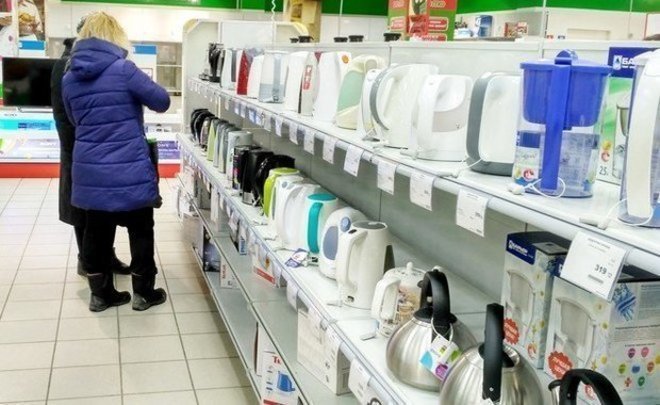Andrey Maslov: ‘Parallel imports have not become a panacea for the Russian economy’
The analyst of Finam FG believes that the gray import of goods can only be an additional factor of sustainability, but it will not solve all the problems

This year, against the background of a shortage of cars in Russia, parallel imports have helped diversify their assortment, according to the Ministry of Industry and Trade of the country. Among the brands that have returned under “gray schemes” — Hyundai Bayon, Suzuki Ciaz, Mitsubishi Xpander, Toyota Corolla Cross, Nissan XTerra, Mazda CX-4. However, the initial frenzy for these supplies subsided, and car dealers began to abandon them. The situation is similar for other commodity items. Why parallel imports are not a panacea for the Russian economy -Andrey Maslov, an analyst at Finam, explains in the author's column for Realnoe Vremya.
Parallel import could help to “align” the budget, but this is not happening
Parallel imports remain a hot topic for discussion both among officials and among the Russian population. Ordinary consumers pay attention to familiar goods on store shelves, but from completely unexpected countries, and analysts are trying to find information on parallel imports in order to understand the macroeconomic picture.
The Russian ruble is also already at the usual levels of 60-65 per dollar, largely under the influence of a “distortion” in the country's trade balance after many importers left, and Russia's exports themselves did not decrease so dramatically. Despite that the optimal ruble exchange rate for the Russian budget is approximately at the level of 75 rubles per dollar, parallel imports could help “align” the budget and weaken the ruble, but this still does not happen, and import data has to be collected “bit by bit” after the Central Bank of Russia stopped publishing full reports in the spring.

Main supplies from the EAEU countries
The main share in parallel imports is made up of supplies from the EAEU countries — about 30%. For example, $1,4 billion worth of goods were delivered from Armenia to Russia in 9 months of 2022, which turned out to be 3 times higher than last year's data. At the same time, the Statistical Bureau of Armenia published data from which it can be seen that imports to Armenia itself also increased significantly from $840 million in 2021 to $1,8 billion in the first three quarters. The flow of goods from Germany has increased from $71,9 thousand to $284 thousand, from Greece — from $799 thousand to $56,8 million, from Hong Kong — from $663 thousand to $123,5 million, and imports from China have increased from $31,1 million to $495,6 million, which is more than 16 times more than in 2021.
A similar situation is observed in Kazakhstan, where, according to October data, goods worth $19,6 billion were imported in January-September of this year, which is although not several times but still more than it was in 2021, when imports to Kazakhstan amounted to $15,1 billion. At the same time, imports of goods to Russia from Kazakhstan increased from $5,1 billion in 2021 to $5,9 billion in 2022 in the first 9 months.
The Turkish Institute of Statistics shows that $5,7 billion worth of goods were imported to Russia from Turkey in the third quarter of this year, an increase of 42,5% compared to the same period last year. It should be noted that in March the import of Turkish goods to Russia fell almost twofold, but by the beginning of May it had already recovered, and by September it had more than doubled.
There is no possibility to track “gray” imports in Russia
In general, there is not much open data on parallel import right now, since it is quite difficult to track the path of the goods. Nevertheless, many carriers are afraid of violating intellectual property rights and the terms of contracts, so deliveries take place through different channels under different brands and from different regions.

At the moment, there is simply no technical capability to track “gray” imports in Russia, so all figures are rather approximate, and forecasts may also differ significantly from real results.
However, now many expect that parallel imports will amount to about $20 billion by the end of the year, while in the summer the figure was expected to be around $16 billion. There is only one thing that can be said with certainty — despite the ongoing supplies and their generally increasing volume, parallel imports have not become a panacea for the Russian economy, but it may work as an additional factor to give stability in the medium-long term.
Reference
The author's opinion may not coincide with the position of the editorial board of Realnoe Vremya.